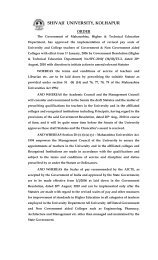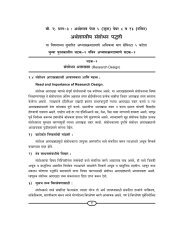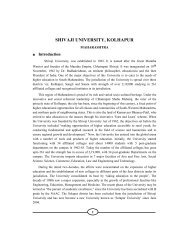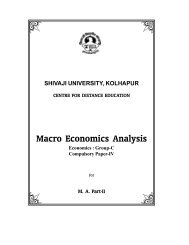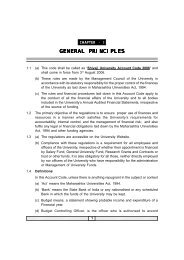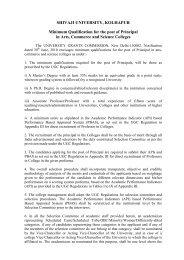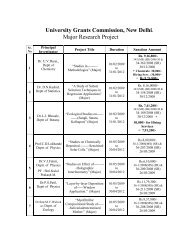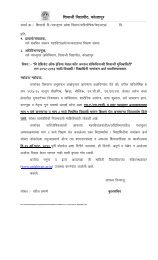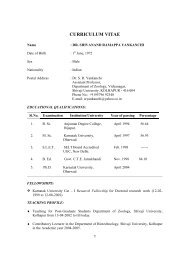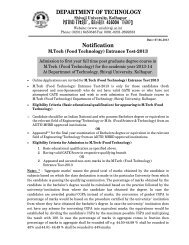Economics(Paper-4) - Shivaji University
Economics(Paper-4) - Shivaji University
Economics(Paper-4) - Shivaji University
You also want an ePaper? Increase the reach of your titles
YUMPU automatically turns print PDFs into web optimized ePapers that Google loves.
structure of the traditional society was based on primitive technology and orthodox<br />
ideas of the people. In this stage modern facilities of technology and science were<br />
absent. The economic activities were carrying out in such societies with simply tools<br />
and implements. And activities were confined only to meet the domestic needs. In fact<br />
pre-industrial revolution societies could be called as traditional societies. The agricultural<br />
production could be increased by bringing more land under cultivation. The increase in<br />
agriculture production conformed to diminishing returns. The reason for diminishing<br />
returns was absence of modern science and technology. The people were more<br />
interested in spiritual and religious pursuits rather than material and physical world. In<br />
brief the society revolved around agriculture. Other economic activities such as<br />
manufacturing, trade etc. are depended on agriculture. Thus agriculture was the main<br />
occupation of the people in the traditional society.<br />
On the above explanation, the characteristics of traditional society can be<br />
summarized as follows;<br />
i. The agriculture was carried on with the primitive methods of production.<br />
i. Law of diminishing return operated in agriculture.<br />
i. There was absence of modern science and technology.<br />
iv. The structure of the society was based on inheritance.<br />
v. The political power was concentrated in the hands of big landlords.<br />
vi. Increase or decrease in population was along with Malthusian lines.<br />
These characteristics clearly depict the economic, social and political structure of<br />
the traditional society.The societies of Pre-Newtonian are called the traditional society.<br />
2. The Pre-Conditions for Take-off<br />
This second stage of growth is a process of transition, which involves changes in<br />
economic, social and political structure of the traditional society. According to<br />
Kindleberger, “the pre-conditions stage involves slow changes especially in attitudes<br />
and organization. The idea of economic improvement takes hold, and with it the frozen<br />
traditional rigidity breaks becomes cheaper, and commerce spreads. New production<br />
functions are adopted in agriculture and industry. But the pace is slow”.<br />
During this stage, education spreads, mental horizon broadens and economic<br />
activity expands. New enterprising men come forward and encourage the will to save.<br />
They take risk in the pursuit of profit. Banks and other savings institutions attempt to<br />
mobilize capital. Investment opportunities expand in other sectors, like transport and<br />
communications etc. The scope for internal and external trade widens. New<br />
manufacturing processes are developed. In general, the pre-conditions for take-off require<br />
changes which touch and alter the traditional social structure, political system and<br />
123456789012345678901234567890121234567<br />
123456789012345678901234567890121234567<br />
13<br />
123456789012345678901234567890121234567<br />
123456789012345678901234567890121234567<br />
123456789012345678901234567890121234567<br />
123456789012345678901234567890121234567<br />
123456789012345678901234567890121234567<br />
123456789012345678901234567890121234567



